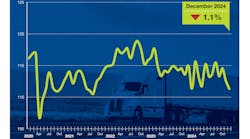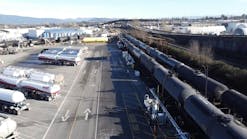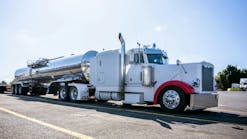FTR’s Trucking Conditions Index reading for April was the lowest ever at -28.66, reflecting the contraction due to the COVID-19 pandemic.
The previous low was -16.08 in September 2008. The only significant positive factor for the TCI was the cost of fuel. Demand, utilization and rates were extremely negative, FTR said.
“Spot market load volumes have recovered well since bottoming out in mid-April, although the recovery seems to have stalled out a bit,” said Avery Vise, vice president of trucking. “The unprecedented depth and speed of the contraction and the severity of disruption in supply chains and freight networks will make it difficult to assess in the short run whether higher volumes are merely temporary or part of a sustained rebound.
“The critical question is what happens once consumers and businesses exhaust the trillions of dollars that Washington has pumped into the economy to offset the pandemic’s financial consequences. All that we can be sure about is that market conditions will not be as bad as they were in April.”
April represented the bottom for most freight-related economic indicators—a conclusion confirmed by an uptick in payroll employment in May—but the pace of recovery remains uncertain. FTR expects post-April trucking conditions to improve sharply while remaining in negative territory through early 2021. However, FTR said it’s prepared for significant revisions in the outlook as more data comes in on demand, capacity and utilization.
Details of the April TCI are found in the June issue of FTR’s Trucking Update, published May 28. Additional commentary provides updates on the COVID-19 discussion and the uncertainties likely to impact the recovery, especially in terms of capacity. Along with the TCI and COVID-19 analysis, the Trucking Update includes data and analysis on load volumes, the capacity environment, rates, costs, and the truck driver situation.









